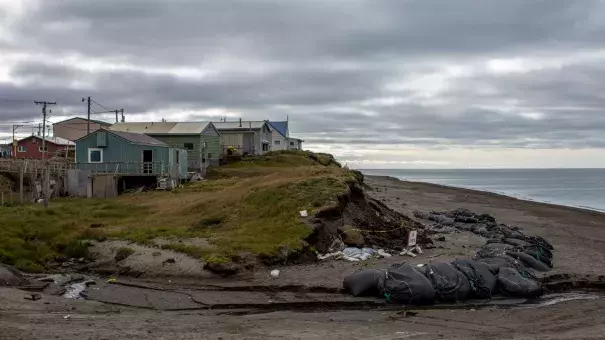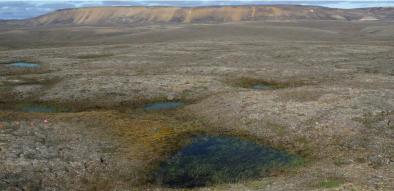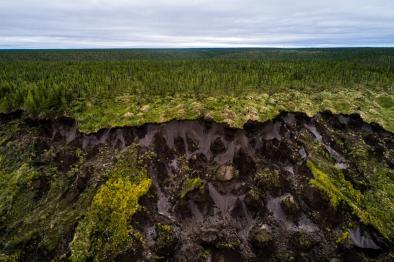As Alaska Thaws, Everything Changes

Bitter winters still dominate life in the Alaskan interior, but a practiced eye can spot the signs of a warming climate, particularly in the ground. Beneath the rolling fields of tussock scattered just north of the Alaska Range, what was once permanently frozen is starting to thaw. The impacts could ripple across the planet.
...
For thousands of years, the boreal forests, bogs, and tundra lands spread across vast tracts of the Arctic and sub-Arctic have been stockpiling carbon. During the fleeting growing season, plants pull carbon dioxide out of the air and use it build new leaves, shoots and roots. Some of that carbon is cycled back to the atmosphere in the summer and the fall, by cold-loving soil microbes armed with a slew of digestive enzymes. But when winter sets in and everything freezes, that bacterial exhale becomes a whisper.
More carbon enters the ground than can be decomposed by microbes, causing it to accumulate—which is why in parts of Alaska, you can find soils that are tens to hundreds of feet thick with organic matter. Below the first few feet, it tends to stay frozen all year. Scientists estimate that anywhere between 1,300 and 1,600 billion tons of carbon are locked away in permafrost soils, roughly twice as much as is currently in our atmosphere.
And all of that soil carbon would have stayed put for centuries to come, if not for the seven billion humans offloading ten billion tons of fossil carbon into the atmosphere each year. Carbon emissions have caused global temperatures to rise roughly a degree Celsius since the start of the Industrial Revolution, but the Arctic has warmed twice as much on average, and far more in specific regions and seasons. Like nowhere else in the world, the communities of the North are experiencing climate change, from dwindling Arctic sea ice to enormous tundra fires to the collapse of roads, buildings, and entire forests as the ground thaws out.
Related Content





